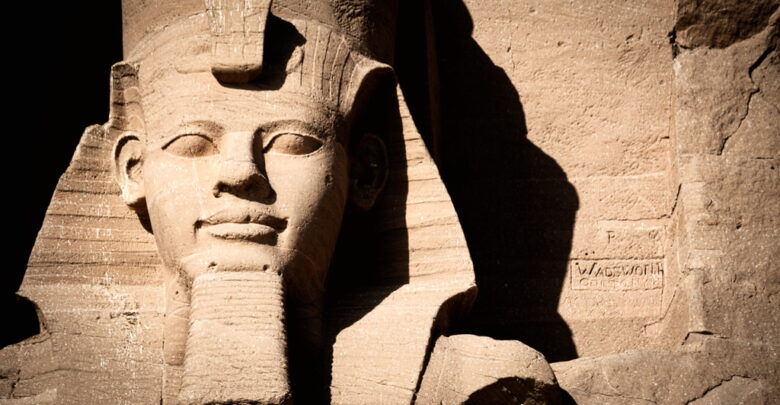In a striking turn of events, the Egyptian Ministry of Tourism and Antiquities announced a significant victory in the field of cultural repatriation.
A 3,400-year-old statue of one of ancient Egypt’s most formidable rulers, Ramesses II, has been successfully recovered from Switzerland.
This historic artifact’s journey back to its homeland marks a significant step in Egypt’s ongoing efforts to reclaim its stolen treasures.
The Odyssey of an Ancient King
A Stolen Legacy
The saga began over three decades ago when the statue was illicitly removed from Egypt.
The artifact, originally from the Ramesses II temple in Abydos, found its way through various channels before being put up for sale on the international black market.
It was eventually displayed in London in 2013, igniting a complex international recovery operation.
The Swiss Connection
The turning point in this historical drama occurred last year when the Swiss government, adhering to the 1970 UNESCO Convention and bilateral agreements with Egypt, decided to return a fragment of the statue to the Egyptian embassy in Bern.
This gesture was part of a broader commitment to combat the illicit trafficking of cultural artifacts.
The Pharaoh’s Return: A Closer Look at the Repatriation Process
Collaborative Efforts
The successful repatriation of the Ramesses II statue was the result of tireless collaboration between various Egyptian authorities.
The Ministries of Tourism and Antiquities, Foreign Affairs, and other concerned bodies worked diligently to trace and recover the precious artifact, showcasing Egypt’s dedication to preserving its cultural heritage.
Restoration and Preservation
Currently, the statue is under the care of the Egyptian Museum in Cairo, where it undergoes meticulous restoration.
This process not only aims to repair the physical damages but also to prepare the statue for future generations to admire and study.
Also Read: King Ramesses II: Facts, Mummy and Temples of Ramesses II
Why It Matters: The Significance of Cultural Heritage Recovery
The return of the Ramesses II statue is more than just the recovery of a stone figure; it’s a restoration of cultural identity and historical continuity.
Each artifact returned to its rightful place contributes to the larger narrative of a civilization’s legacy, providing insights into the past and lessons for the future.
Impacts on Tourism and Education
The repatriation of such artifacts also boosts local tourism, inviting both international and domestic visitors to explore Egypt’s rich history firsthand.
Moreover, these recoveries serve educational purposes, allowing scholars and the public to gain a deeper understanding of ancient Egyptian culture and governance.
The Future of Antiquities Repatriation
As we celebrate the return of the Ramesses II statue, we must also consider the future of cultural repatriation.
With numerous artifacts still lost abroad, the fight to reclaim stolen treasures continues. Each successful return is a testament to the possibilities that arise from international cooperation and shared respect for cultural heritage.
Conclusion: A Triumph for Cultural Heritage
The recovery of Ramesses II’s statue is not just a win for Egypt but a victory for cultural preservation worldwide. It highlights the importance of international collaboration in protecting and honoring our shared human history.
Frequently Asked Questions About the Ramesses II Statue
- Who was Ramesses II?
- Ramesses II, also known as Ramesses the Great, was the third pharaoh of the Nineteenth Dynasty of Egypt, famous for his extensive building programs and military expeditions.
- How did the statue of Ramesses II end up in Switzerland?
- The statue was stolen from Egypt in the late 1980s or early 1990s, passed through various hands, and was even displayed for sale in London before ending up in Switzerland.
- What does the repatriation of the statue signify for Egypt?
- It signifies the recovery of an important piece of Egypt’s cultural heritage and highlights the country’s ongoing efforts to retrieve stolen artifacts.
- What is involved in the restoration process of such artifacts?
- Restoration can include cleaning the artifact, repairing any damages, and sometimes restoring missing parts, all while preserving the original materials and techniques.
- Why are artifacts like these so important to modern Egypt?
- They are crucial for historical research, educational purposes, and boosting tourism, which is a significant part of Egypt’s economy.
- What role do international laws play in the recovery of stolen artifacts?
- International laws, like the 1970 UNESCO Convention, provide a framework for countries to cooperate in preventing the illicit trade of cultural property and facilitate their return.
- Can the public view the Ramesses II statue?
- Yes, once the restoration is complete, the statue will be on display at the Egyptian Museum in Cairo, where the public can view and appreciate this remarkable piece of ancient history.
